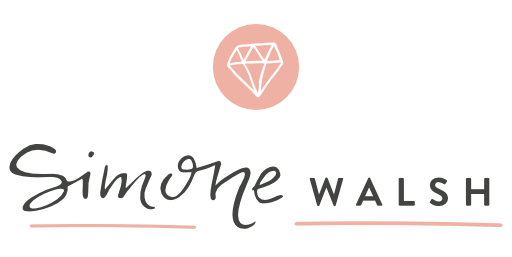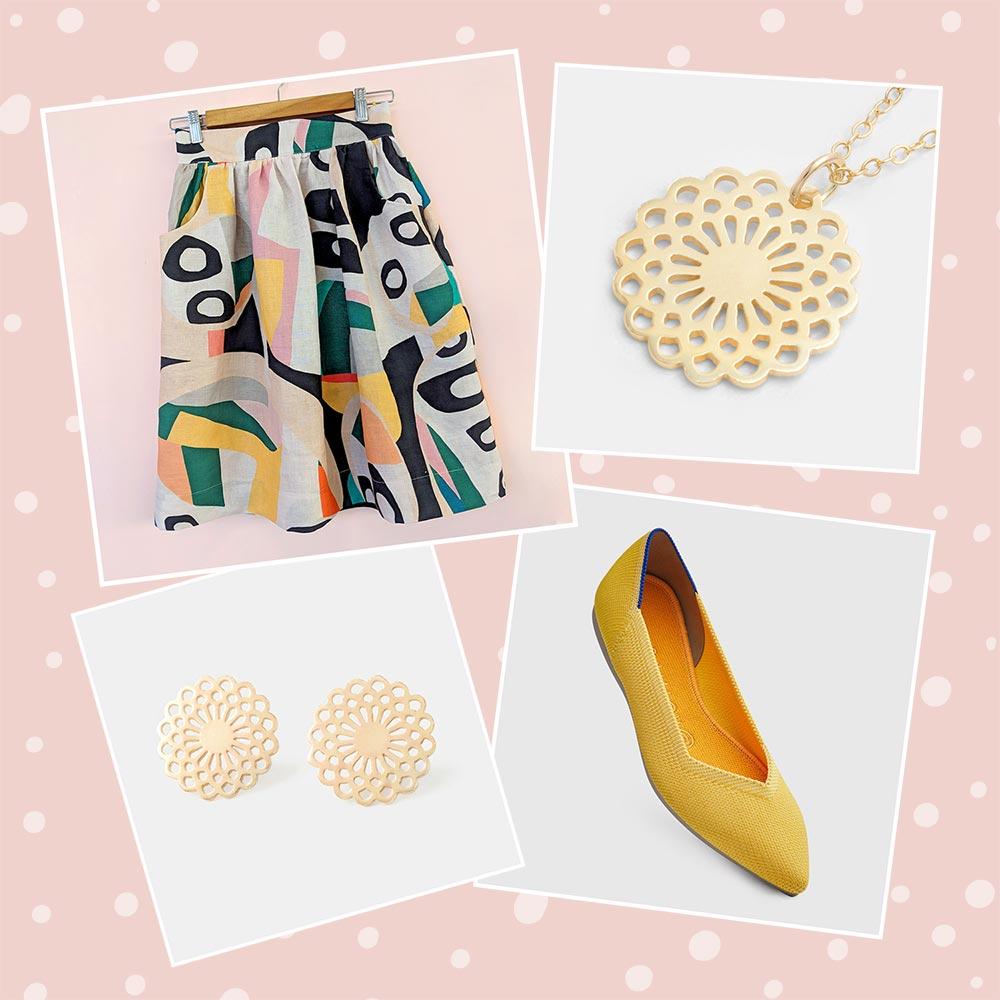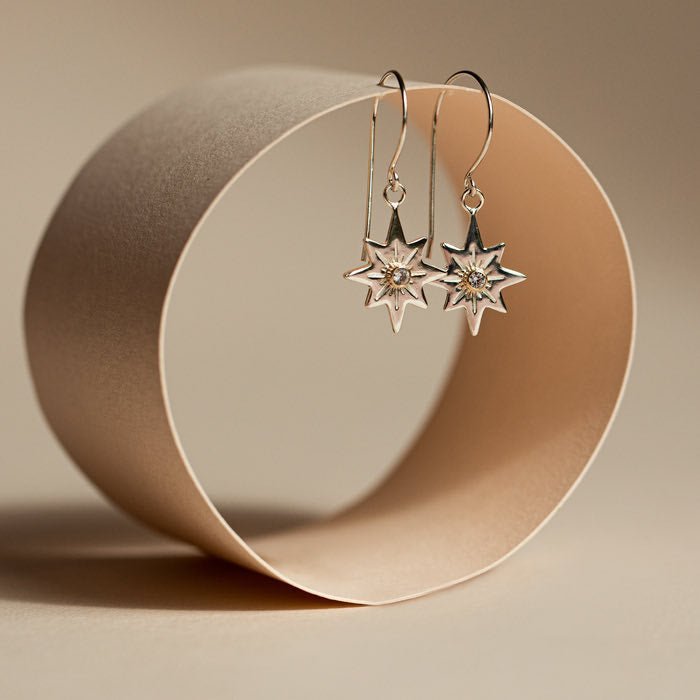 In part one of my Professional Pricing article I covered how to calculate your wages, how to determine your annual overheads and how to come up with a margin percentage to cover these costs in your prices and be sure that you'll be breaking even.
In part one of my Professional Pricing article I covered how to calculate your wages, how to determine your annual overheads and how to come up with a margin percentage to cover these costs in your prices and be sure that you'll be breaking even.
This article is part of a small series for independent makers and designers. While most of our Jewellery Blog is focused on jewellery styling and education for our customers, we occasionally share insights for fellow creatives. Curious about what I do? Check out my Australian jewellery.
If you've missed the first part of the article go to Professional Pricing for Craft and Design (part 1).
Part 2 will cover: putting what you've learned into practice with a pricing spreadsheet, what to do if your resulting prices are too high and how to refine and adjust into the future.
If you're ready to start finalising your pricing formula and put it into practice in your business, then scroll down below to continue reading the first part.
Putting this into practice:
So you've done some thinking and calculating, you've come up with some key numbers relating to pricing ... now what? It can all seem a bit daunting but in reality it's not, provided you're willing to spend the time on setting it up to get it right.
The hardest part is getting the figures worked out to begin with and from there it's a matter of putting it all into practice and updating it as needed (at least annually).
Best of all, you can be confident that your pricing is pretty close to reflecting the true costs of running your business and the income and sales volume you need it to bring in to make it work for you.
So let's dive in ...
3. Set up a pricing spreadsheet:
If you're established, you probably already have one of these that you can work with and modify as needed. Make a copy if you're making substantial changes to be on the safe side.
If you don't have a pricing spreadsheet, now is the time to get it up and running, at least in a basic way to help you figure out your pricing structure. Once your structure is in place and the spreadsheet is finalised, it will become once of the most important tools in your business.
How to use spreadsheets is beyond the scope of this article, but you'll find plenty of support online if it is new to you. If you don't have a spreadsheet application I highly recommend using OpenOffice or Google Sheets, both of which are free. I use both of them all the time.
Every business is different and what you'll need in your pricing spreadsheet will depend on many factors, however, below are some basics to get you started.
Note that this is where you will need that all important chargeable hourly rate which you calculated early in part 1, so make sure you have it handy.
Step 1: List your products
Of course step one is to simply list your products in a column. Give them descriptive but not overly long names so they're easy to recognise as you scroll through the list. We have around 1000 products in our pricing sheet, so it can get very long over time.
It's also a great idea to have a column for an SKU for each product (a unique identifier, often alpha-numeric). We use these to keep track of wholesale products and in our online shop.
You might want to add another column giving product type (necklaces, bracelets, etc.). We find this useful.
Step 2: Calculate your base cost per product
You need a way to keep track of the costs of your materials and time for every item you make so you can come up with a base cost price. Make use of your spreadsheet for storing and updating this information.
Labour:
Firstly have a column where you estimate the time taken to complete each product each time you create one for sale. This doesn't have to be down to the second: just put a realistic amount of time you think it takes on average and adjust it later if needed.
Make sure you have your chargeable hourly rate (as determined in part 1) as a fixed item in your spreadsheet where you can easily make use of it to do the sums. If your products are made in smaller chunks of time, I recommend putting this in as a per minute rate instead to make your calculations easier.
Have another column where you multiply your time figure by your chargeable rate. This is the labour component of your cost price for that product.
Materials, processes, etc.:
Have at least one column where you add up the costs of the materials and any processes you use to make each individual product. How your business works will determine the best way to do this and what needs to be included. Just be sure to capture all of these costs for each product in a way that makes sense to you.
You don't have to redo your product costs calculation each time you make something if you make the same designs repeatedly. Just try to keep your stock or component costs roughly up to date over time. If you purchase items in different currencies, then it's a good idea to keep updated currency exchange rates somewhere in your spreadsheet to help you.
If you don't remember how much you spent on some components, then find out how much they would cost to replace or just make an educated guess. You could also consider simply how much you'd like to be compensated for parting with items in your stash.
In our pricing spreadsheet we have a standalone sheet with a long list of components and stock we use in various designs (gemstones, findings, chains, wire, etc.) giving the cost of each per unit, which could be length, weight or per item. That way we can easily pull the costs into our product pricing sheet and multiply the cost by the number of units used for each product we make.
Calculate your base cost:
In a separate column, simply add up your chargeable labour, materials, processes and any other costs you've included for each item you make. You'll then have your final base cost price for that particular item. This is an important number to keep track of.
Rinse and repeat for all of your products.
Step 3: Factor in your margin percentage
You then need to factor in the margin percentage you have decided upon in part 1 of this article. As a reminder, this margin is to cover your non-chargeable labour and all business overheads, plus give you a bit of profit and wriggle room.
In your spreadsheet you need to enter the decimal number used to calculate your margin as a fixed item that you can use to do the calculations. This is a bit of a weird number to come up with, so here's a refresher:
- Let's say the margin you've chosen is 78%
- Put 78% in decimal form: 0.78
- Subtract 0.78 from 1 = 0.22
- 0.22 is the decimal number to calculate from
To come up with your minimum selling price with the margin included for each product, simply divide your total base cost price by the decimalised margin number. Here's an example:
- 78% margin = 0.22 (as above)
- Say the total base cost is $12.80
- $12.80 / 0.22 = $58.18
- $58.18 is the minimum selling price
In the above example, if you sold that product for the minimum selling price, you'd have $45.38 profit, which is there to cover your overheads + profit/contingency, along with your non-chargeable time.
Step 4: Factor in taxes and other costs
If you need to charge GST, VAT or sales tax, then have a column in your spreadsheet where you calculate this and add it to your minimum selling price.
You might also want to include other costs after you've calculated your margin, such as transaction fees on sales, shipping costs, etc.. Again, your specific business will have different requirements, so it's up to you what will work and where to factor in these costs.
Once you've added in any of these extras, that final figure becomes your true minimum selling price.
Step 5: Factor in wholesale, if needed
If you wholesale your items, then at this point you'll have a figure which is the minimum selling cost at wholesale. You're likely to want to double it to determine your final retail selling price.
I suggest going back to part 1 and re-reading the final section about wholesale to help you think about whether this is the right approach for your business or whether you'd like to do the wholesale sums slightly differently. Do some experimenting and see what works. I have some more thinking about wholesale below if you're finding this difficult.
Step 6: Finalise your retail prices
Once you have your minimum retail selling price for a product, you can make a judgement about what people will actually pay for each item or 'what the market will bear', along with what simply feels right.
I have a column in my spreadsheet next to my minimum selling price where I manually enter the final retail selling price for each product, having made a decision about what seems best.
Ideally this final selling price should be no less than the minimum price you have come up with, unless you think lost margin on one item (a loss leader) will be made up for by other items which you can sell for a higher amount than your minimum. Flexibility is always good!
Retail pricing is a complex issue and I recommend doing some reading about it - I have a handy link to an article about the psychology of pricing below. Humans are weird in the way they relate to numbers and it's worth having an understanding of that as you come up with your final prices. You might find that changing a price by a single digit one way or the other will dramatically change how well that item sells. Strange but true!
Once you've determined your final selling price, you might need yet another column in your spreadsheet to also finalise the true GST, VAT or sales tax component of that final price.
You can also do a final calculation which deducts all of your costs and taxes from the final selling price so you can see your actual profit margin for each item and check that it looks about right.
4. OMG! The prices are too high!
If you've done the work above and the prices you're coming up with seem far too high, then some serious thinking is required. For example:
- Are you being realistic? Maybe the market really will pay what your products are worth and maybe it's you who is under-valuing your work!
- Have you gone back through your calculations to make sure they're correct and that you haven't made any errors?
- Is there a way you can streamline your costs or labour without being worse off?
- Is wholesale really a viable option for your business? That extra margin is a big chunk to be giving to someone else when you've done all the work to create your products.
- Are you attracting the wrong customers? Or are you selling in the wrong place to find the right customers?
- Will improved branding, photography and other marketing help to justify your prices?
- Have you made a point of promoting 'cheapness' as a point of difference in your business and does that need undoing?
- Are you comparing your prices to a similar business? Are they under-pricing (if so, they won't be around for long)? Do they make their products in a different way to you? How is your business different? How can you make it more different in a way that justifies your prices?
If you've thought carefully about these sorts of issues and still feel that either your final retail prices or the volume of sales needed to break even are too high, then you need to take a big step back and consider whether you have a much bigger problem.
Perhaps the market for your business simply isn't strong enough for it to work as things stand. Perhaps you need to consider completely different products. Or perhaps your business needs to be more scaleable than it is to make enough products selling at the price needed to cover its costs. You might need to reconsider how your pieces are made and if there's a more efficient or cost effective way to do it.
These are hard things to think about, but they're crucial if your business is to succeed and thrive. I've been through some similar thinkings during my career (some of which I wrote about several years ago): it's hard but sometimes very necessary.
If your pricing model is indicating these sorts of problems in your business, then under-pricing and hoping it will work out in the end isn't the right strategy. You need to have a big re-think about what you're doing, with everything on the table for consideration.
The good news is that when you come back with a revamped business, your pricing basics will all be set up and ready to work with.
Choosing to make an initial loss
If you decide that initially you're happy (and can afford) to make a loss while you establish your business and grow your customer base, then that's fine. You may also find it simply takes time and financial investment in marketing to reach the sales volume needed to cover your total costs.
Many businesses consciously start in this way. But you should always intend to up your prices or lower your costs to where they need to be as soon as you can, otherwise your business will most likely fail. By using a professional pricing method you'll always know where you need to be taking your prices in future even if you're not quite ready to do it yet.
Also never start out with prices that are well beneath where you need them to be. You will train your customers to think that's normal and it will be harder to raise them to the right level in future.
5. Making adjustments:
Adjusting and refining your pricing on an ongoing basis is a very important thing to do. The economy changes, costs go up and down, your business needs will evolve, as will your products and customers: you need to keep an eye on these things and adjust as needed.
Do your best to keep track of changes and you can go back at any time to revisit and adjust your calculations. Don't spend too much time obsessing over minor fluctuations as they probably won't make a lot of difference, but do keep an eye on things.
It’s a great idea to schedule time to do a thorough revisit of your pricing at least once a year to make sure you’re still on track. I generally do this work in January or February when my business is quiet after the Christmas rush.
5. Go forth and sell things:
Now your pricing is worked out, it's time to go out and sell your wonderful products to customers who will love them! Yes, I know that's a whole world of work all by itself.
In my experience, the learning and thinking about business never ends: there's always more to learn about marketing, new business strategies to put in place, different ways to think about reaching customers, etc.. Always be open to evolving your skills and your business in order to make it work for you.
(Reading this on a website that isn't simonewalsh.com? Be aware that the content has been stolen, infringing the copyright of a small business. ABN: 65108844126)
Also don't forget that you're not the only person with these struggles and who is trying to make ends meet in a difficult business. Try to support your fellow small businesses, designers and artisans, both as a colleague and as a customer. You'll get plenty of support back in return.
Check out my article on how to truly support small shops and designers for more on this.
Good luck!
A short version of this article was first published in Filings, the quarterly newsletter of the Jewellers and Metalsmiths Group of Australia - NSW (JMGA-NSW) in July 2007. It was freshly updated in 2021.
Links for further reading
- Pricing Psychology: a list of techniques
- NAVA: Online learning for artists (including pricing, commissions, etc.)


 Beaded necklaces
Beaded necklaces  Chain necklaces
Chain necklaces  Silver earrings
Silver earrings  Silver jewellery
Silver jewellery  Silver rings
Silver rings  Simone Walsh is a
Simone Walsh is a 
